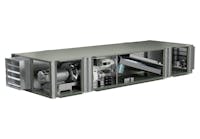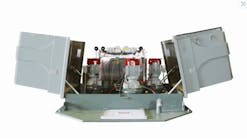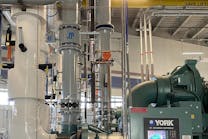With both new and retrofitted commercial structures certified under the U.S. Green Building Council’s LEED (Leadership in Energy and Environmental Design) rating system, owners/operators tend to assume they simply can “set it and forget it.” Such an approach is inherently flawed, as all buildings “drift,” meaning the performance of their systems—even those perfectly commissioned and tuned—degrades over time, the result of operational changes, product failure, maintenance issues, and more. This jeopardizes owners’ ability to achieve maximum return on their LEED investments.
Take, for instance, HVAC control systems. While setpoints can be fine-tuned for the LEED certification process, they easily can become outdated if not monitored. Temporary schedule changes can become permanent when facility personnel forget to reset them. New buildings can fill up fast, and existing buildings can see tenants come and go with regularity. If a building’s HVAC controls are not updated within a month, energy dollars likely will be wasted. With continuous commissioning of controls or, taken a step further, with predictive controls, as well as the deployment of measurement-and-verification tools, day-to-day building performance can be optimized and LEED-certified buildings kept operating within design guidelines.
Case in Point
Vista PEAK Preparatory in Aurora, Colo., is a perfect example. The 216,000-sq-ft school, which serves roughly 1,300 students and staff, achieved LEED Gold certification in 2011. Four years later, it joined the local utility’s building-optimization pilot program and learned its energy intensity had nearly doubled, climbing from 35,000 Btu per square foot in 2011 to 65,000 Btu per square foot by 2015.
Because heating and cooling operations typically account for the largest portion of a building’s energy use, efforts initially were focused there. The energy manager speculated there may have been a problem with the air handlers, but, without robust multilayered real-time trend data to analyze, this was only an assumption. The solution was to employ cloud-based, technology-enabled services backed by a remote team of energy experts, data scientists, and building engineers.
The remote task force worked with Vista PEAK’s on-site team to rectify the building’s performance. Through analysis of historical-trend and real-time data generated by the cloud-based solution, various energy anomalies were diagnosed as being caused by parameters within the building-management system that either had drifted out of calibration or needed adjustment based on more current operational needs. For instance, at brief times during the gradual transition from morning heat to afternoon cooling, some portions of the intricate HVAC system would be attempting to simultaneously heat and cool to satisfy space conditions. Given this, modifications to programing and control sequences were deemed necessary. Working together, the cloud-based platform’s team of experts and Vista PEAK’s management developed a plan of attack to achieve optimization and return to the level of efficiency seen at the time of the building’s initial startup.
“It came as quite a surprise to see just how out of sync the various elements of the HVAC system were,” Craig Wright, energy manager for Aurora Public Schools, said. “The data obtained through the platform, combined with the support we received from its energy experts, allowed us to understand the inner workings of our building at a granular level. As a result, we were able to pinpoint problems between equipment and programming, the detection of which had otherwise been elusive.”
Overcoming Misconceptions
Buildings face constantly changing variables, from occupancy patterns to technology upgrades. Although some variables, such as weather patterns, are out of a building owner’s or manager’s control, they still need to be taken into account. If the owner or manager of a building—any building—is not constantly measuring performance, modeling optimization scenarios, and fine-tuning controls, then there is room for improvement.
Sometimes, changes in operation can be triggered by unexpected events. In New York City, a building owner, using the same technology as Vista PEAK Preparatory, was able to adjust for a change in thermal profile caused by the growing shadow cast by a neighboring building under construction. With the platform and its recurring loop of measurement, modeling, and optimization in place, this variable was easily accounted for, and building controls were adjusted in real time, preventing any drift in the building’s day-to-day performance.
Continuous optimization of HVAC controls ensures a facility owner gets maximum return on investment. It does not take much for a building’s performance to drift over the span of a week, a month, or a year. As a proactive solution backed by a team of experts, optimization ensures payback by capitalizing on opportunities as they happen, rather than after the fact.
As vice president of product and marketing for BuildingIQ, Steve Nguyen works to bring cloud-based energy intelligence to commercial, health-care, education, and other large buildings. Previously, he worked for Bidgely Inc., running marketing and helping utilities better engage consumers through disaggregation, and, prior to that, Echelon Corp., running corporate and embedded-solutions-product marketing and helping to shape early markets for smart buildings, smart homes, and the smart grid.
Did you find this article useful? Send comments and suggestions to Executive Editor Scott Arnold at [email protected].











